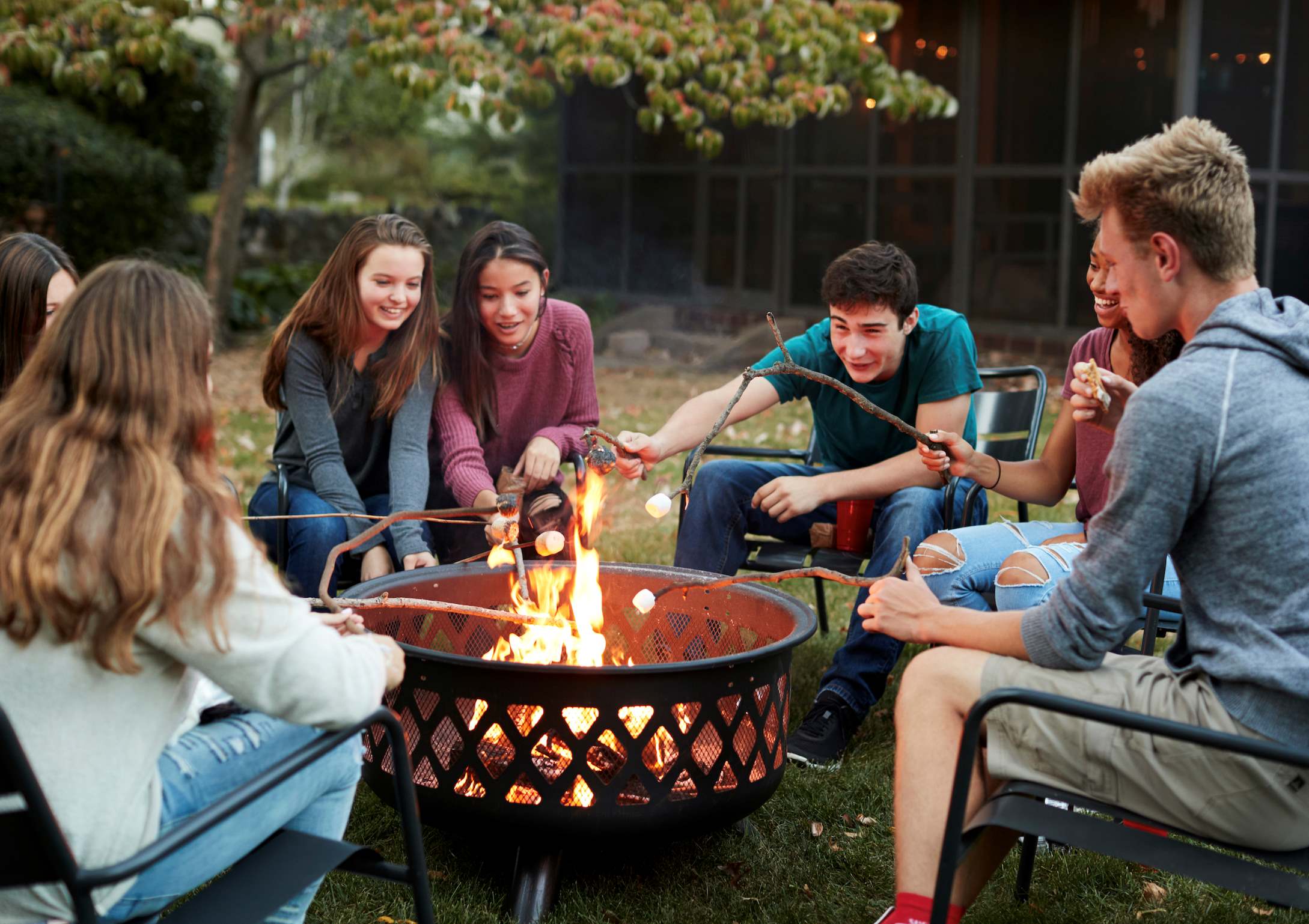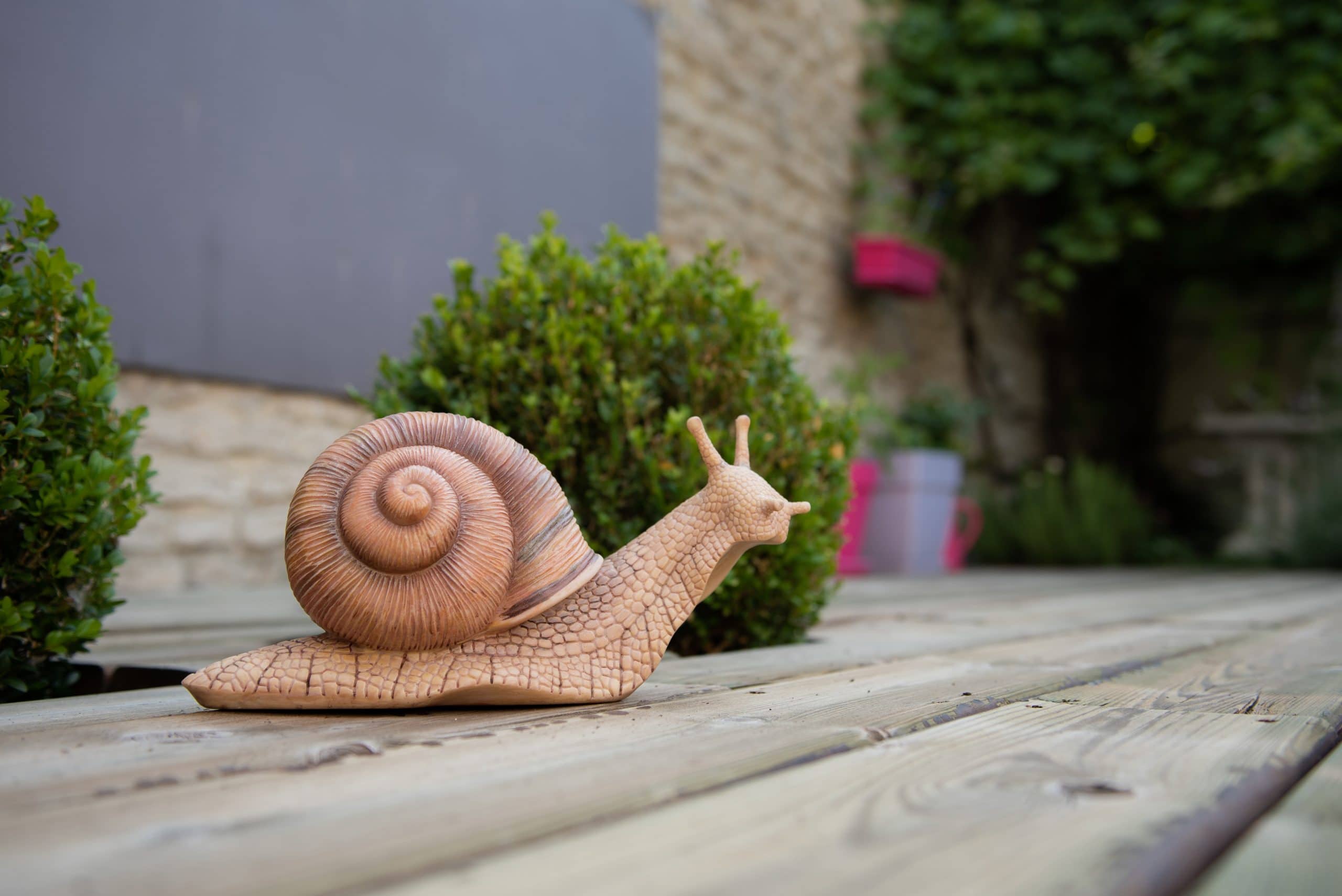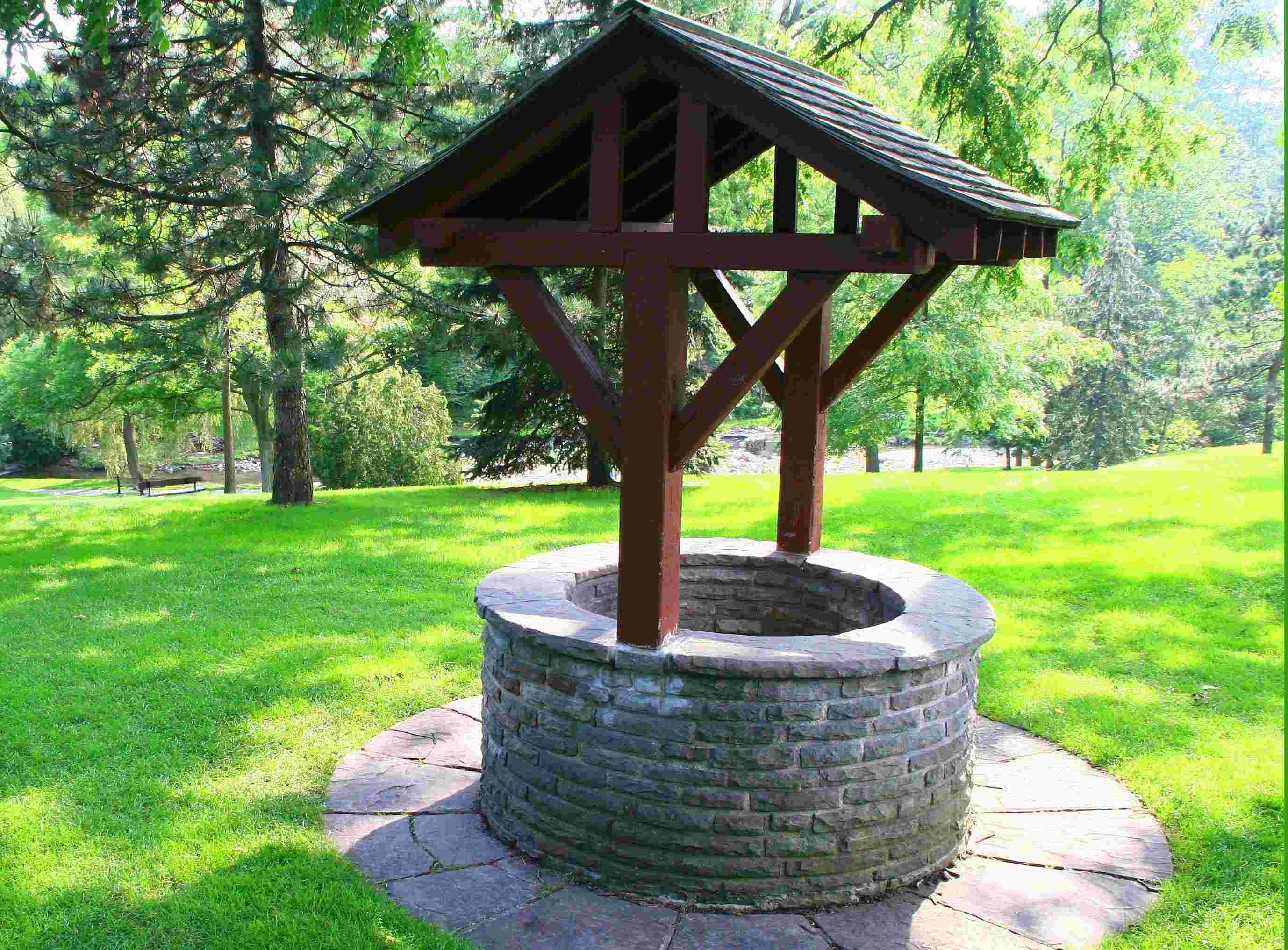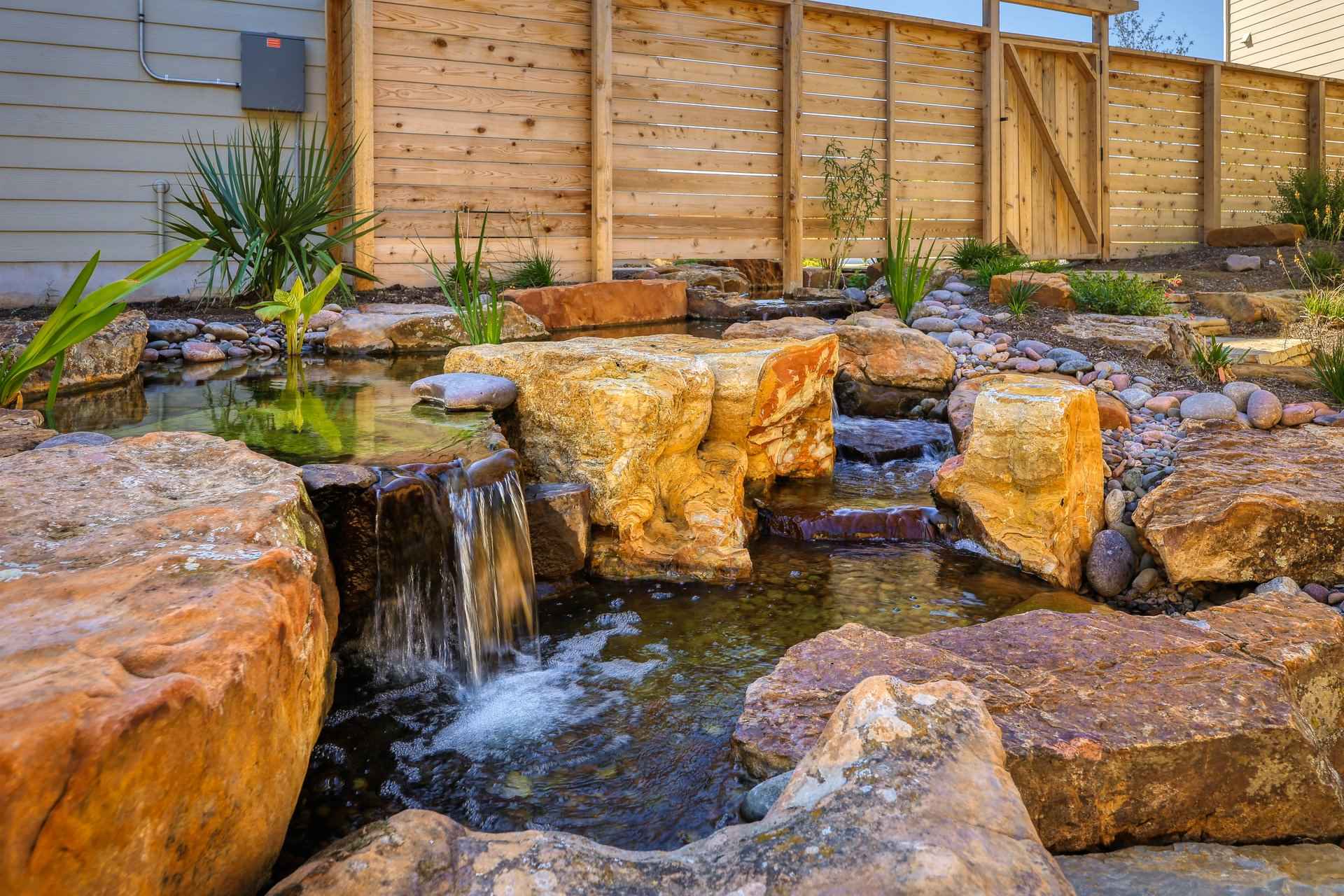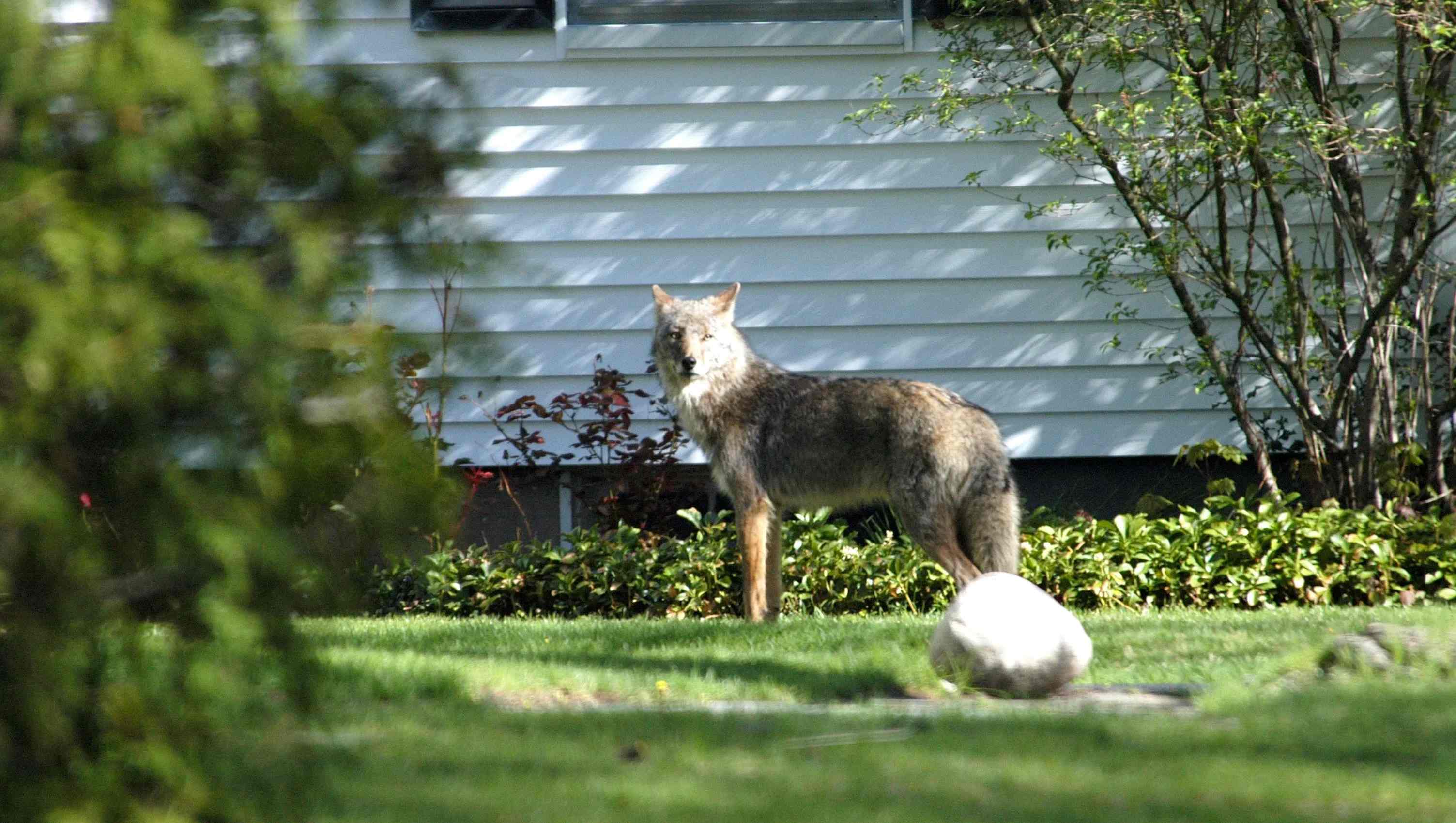Home>Gardening Techniques>DIY Projects>How To Clean Your Backyard
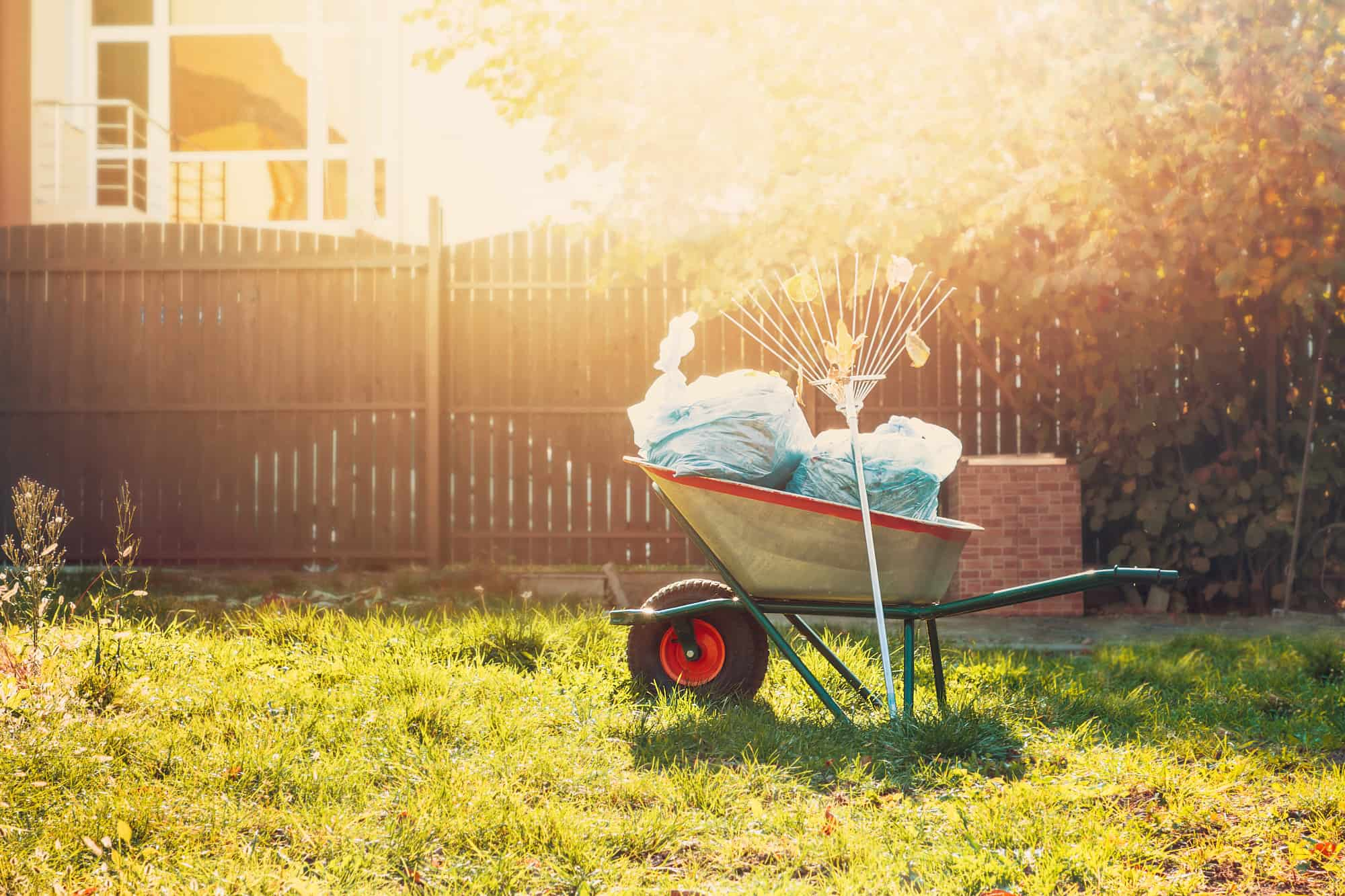

DIY Projects
How To Clean Your Backyard
Modified: January 22, 2024
Learn how to clean your backyard with these simple and effective DIY projects. Transform your outdoor space into a pristine oasis today!
(Many of the links in this article redirect to a specific reviewed product. Your purchase of these products through affiliate links helps to generate commission for Chicagolandgardening.com, at no extra cost. Learn more)
Table of Contents
- Introduction
- Assessing the Cleanup Requirements
- Gathering the Necessary Supplies
- Removing Debris and Fallen Leaves
- Clearing out Overgrown Vegetation
- Trimming and Pruning Trees and Bushes
- Cleaning and Maintaining Outdoor Furniture
- Sweeping and Washing Hard Surfaces
- Treating Weeds and Unwanted Growth
- Organizing and Storing Tools and Equipment
- Maintaining a Clean Backyard
Introduction
Welcome to the world of DIY projects! There’s something incredibly satisfying about taking matters into your own hands and transforming your backyard into a haven of beauty and functionality. Whether you’re a seasoned DIY enthusiast or just starting on your journey, this article will guide you through the process of cleaning and maintaining your backyard.
Your backyard is an extension of your living space. It’s where you can relax, entertain, and enjoy the outdoors. However, without proper care and maintenance, it can quickly become a neglected and cluttered space. That’s where DIY projects come in. By taking the time to clean, organize, and spruce up your backyard, you can create a space that you’re proud to show off and spend time in.
In this article, we will explore the various steps involved in cleaning and maintaining your backyard. We’ll provide you with practical tips, expert advice, and creative ideas to make the process both efficient and enjoyable. From removing debris and overgrown vegetation to treating weeds and organizing your tools, we’ve got you covered.
So, roll up your sleeves, grab your gardening gloves, and let’s dive into the world of DIY backyard projects. With a little bit of effort and a whole lot of inspiration, you can transform your backyard into a beautiful oasis that reflects your personal style and enhances your outdoor living experience.
Assessing the Cleanup Requirements
Before diving into any DIY project, it’s important to assess the cleanup requirements of your backyard. This step will help you understand the scope of work and prioritize tasks based on their urgency and importance.
Start by taking a walk around your backyard and making note of areas that require attention. Look for debris, fallen leaves, overgrown vegetation, and any other signs of neglect. Pay attention to the condition of outdoor furniture, hard surfaces, and the overall cleanliness of the space.
Once you have identified the areas that need cleanup, categorize them based on their level of urgency. For example, removing fallen branches or clearing out clogged gutters may demand immediate attention, while minor weeding or tidying up outdoor cushions can be addressed at a later stage.
Consider the time and effort it will take to complete each task. Break down larger projects into smaller, manageable tasks to make the cleanup process more achievable. This will also help you create a realistic timeline for completing the work.
Another important aspect of assessing the cleanup requirements is considering the tools and supplies you may need. Make a list of items such as rakes, pruning shears, gloves, garbage bags, and cleaning solutions. This will ensure that you have everything you need on hand when you begin your DIY project.
Remember, the goal of assessing the cleanup requirements is to have a clear understanding of what needs to be done and to plan accordingly. By taking the time to evaluate the state of your backyard, you can approach the cleanup process in a systematic and organized manner.
Gathering the Necessary Supplies
Now that you have assessed the cleanup requirements of your backyard, it’s time to gather the necessary supplies for your DIY project. Having the right tools and materials on hand will make the process much easier and more efficient.
Start by reviewing the list you made during the assessment phase. Identify the specific tools and supplies you will need for each task. Here are some common items that may be required:
- Rakes and brooms for clearing debris and fallen leaves.
- Pruning shears or loppers for trimming overgrown vegetation.
- Garden gloves to protect your hands while working.
- Gardening bags or garbage bags for collecting and disposing of waste.
- Cleaning solutions and brushes for washing outdoor furniture.
- Weed killer or weed pulling tools for treating unwanted growth.
- Storage bins or shelves for organizing tools and equipment.
If you don’t already have these supplies, consider borrowing from a friend or neighbor, or check your local hardware store, garden center, or online retailers for affordable options.
It’s also a good idea to have a first aid kit on hand, just in case you encounter any minor injuries or accidents during the cleanup process. Safety should always be a top priority.
Once you have gathered all the necessary supplies, organize them in a convenient location in your backyard. This will make it easier to access them as you tackle each task.
Remember to wear appropriate protective gear, such as gloves and safety glasses, when handling tools and chemicals. Read and follow the instructions on cleaning solutions and weed killers to ensure safe and effective use.
By gathering the necessary supplies ahead of time, you’ll be well-prepared to tackle the cleanup tasks in your backyard. Having the right tools and materials will make the process smoother and more enjoyable.
Removing Debris and Fallen Leaves
One of the first tasks in cleaning your backyard is removing debris and fallen leaves. This not only improves the overall appearance of your outdoor space but also helps prevent potential hazards and pests.
Start by clearing out the larger debris, such as fallen branches or sticks. Use a rake or broom to gather them into a pile, then dispose of them in a designated green waste bin or compost pile. Make sure to wear gloves to protect your hands.
Next, focus on removing the fallen leaves. Raking them into another pile can make the task more manageable. If you have a large backyard, consider using a leaf blower or vacuum to speed up the process. The collected leaves can be added to a compost bin, used as mulch, or disposed of in your green waste bin.
Be thorough in your cleaning, removing leaves and debris from flower beds, lawn edges, and other hard-to-reach areas. Pay special attention to areas near fences, walls, and other structures where debris tends to accumulate.
Once the bulk of the debris is cleared, use a leaf rake or a lawn mower with a bag attachment to collect any remaining small leaves and clippings. This will give your backyard a tidy and well-maintained appearance.
Consider using the collected leaves as compost or mulch. This organic matter can enrich your soil and improve its fertility. If you don’t have a compost pile, you can start one using a compost bin or simply leave the leaves in a designated area to decompose over time.
Removing debris and fallen leaves is an essential step in cleaning your backyard. It not only enhances the aesthetics but also promotes a healthier and safer outdoor environment.
Clearing out Overgrown Vegetation
Overgrown vegetation can quickly turn your backyard into a chaotic and untidy space. Clearing out this overgrowth is an important step in restoring order and creating a more visually appealing environment.
Start by identifying the areas where vegetation has become overgrown. This may include bushes, shrubs, vines, or even unwanted weeds. Use pruning shears or loppers to trim back the excess growth, removing any dead or damaged branches in the process.
When pruning, aim for a balanced and well-maintained shape for your plants. Trim them to a reasonable size, keeping in mind their natural growth patterns and the overall aesthetic of your backyard. Consider seeking advice from a gardening expert if you’re unsure about how to properly prune specific plants.
If you have vines that have become unruly or are encroaching on other plants or structures, gently untangle and redirect them to a more suitable support or trellis. This will help create a neater and more organized appearance.
For unwanted weeds and grasses, use a weed remover tool, such as a hand weeder or a hoe, to dig out the roots. Be thorough in removing the entire plant, including the roots, to prevent regrowth. Consider using an organic weed killer, if necessary, following the instructions carefully.
Once the overgrown vegetation is cleared, consider adding fresh mulch to flower beds or around trees and bushes. This not only helps suppress weed growth but also adds a finishing touch to the overall appearance of your backyard.
Regular maintenance is key to preventing vegetation from becoming overgrown again. Keep an eye on plant growth and prune as needed to maintain a well-manicured and organized backyard.
Clearing out overgrown vegetation can be a time-consuming task, but the results are worth it. By reclaiming control over your plants, you’ll create a more visually pleasing and harmonious outdoor space.
Trimming and Pruning Trees and Bushes
Trimming and pruning trees and bushes is a crucial step in maintaining the health, shape, and aesthetic appeal of your backyard. Properly trimmed and pruned plants not only look more attractive but also encourage healthy growth and prevent potential hazards.
Start by assessing the trees and bushes in your backyard. Look for any dead, damaged, or diseased branches that need to be pruned. These unhealthy branches not only detract from the overall appearance but can also pose a safety risk, especially during storms or high winds.
Using clean and sharp pruning shears or loppers, carefully remove the identified dead or damaged branches at their base. Make sure to cut at an angle just above a healthy bud or lateral branch. This promotes proper healing of the wound and encourages new growth.
While pruning, pay attention to the natural shape and growth pattern of the tree or bush. The goal is to maintain a balanced and well-proportioned appearance. Remove any branches that are crossing or rubbing against each other, as this can cause damage and hinder healthy growth.
When pruning larger branches, use a pruning saw or a chainsaw, if necessary. Make a clean and precise cut just outside the branch collar, which is the swollen area where the branch meets the trunk or main stem.
Be mindful not to remove more than one-third of the plant’s total growth during a pruning session. Over-pruning can stress the plant and inhibit its ability to recover and regrow properly.
For bushes and shrubs, use hedge shears or hand pruners to shape and maintain their size. Trim back any overgrown branches that are encroaching on walkways, windows, or other plants. Remember to step back occasionally to assess the shape and make adjustments as needed.
Lastly, remove any fallen leaves, twigs, or debris that may have accumulated around the trees and bushes. This not only enhances the overall appearance but also helps prevent the spread of pests and diseases.
Regularly trimming and pruning trees and bushes will help keep them healthy, vibrant, and visually appealing. It’s a task that requires attention to detail and proper techniques, but the results are sure to elevate the beauty and functionality of your backyard.
Cleaning and Maintaining Outdoor Furniture
Outdoor furniture is an essential element of any backyard, providing a comfortable and inviting space for relaxation and entertainment. However, exposure to the elements can take a toll on your furniture’s appearance and durability. Regular cleaning and maintenance are necessary to keep your outdoor furniture looking its best.
Start by removing any cushions or fabric components from your outdoor furniture. Check the manufacturer’s instructions for cleaning recommendations, as some materials may require specific care. If allowed, machine wash or hand wash the fabric components using mild detergent and cold water. Air dry thoroughly before reattaching them to the furniture.
For metal furniture, wipe it down with a damp cloth and mild soap. Avoid using abrasive cleaners or steel wool, as these can damage the finish. If you notice any rust spots, gently scrub them with a mixture of equal parts water and vinegar, then rinse and dry thoroughly.
Wooden furniture should be cleaned with a mixture of mild soap and water. Use a soft brush to scrub away dirt or stains, then rinse with clean water and dry it completely. Applying a protective sealant or wood stain can help preserve the wood and prevent it from weathering.
Plastic or resin furniture can be cleaned using a mixture of mild soap and warm water. Scrub away any dirt or grime using a soft brush or sponge, then rinse thoroughly and dry it off. Avoid using harsh chemicals or abrasive scrubbers, as they can scratch or damage the surface.
Regardless of the material, regular maintenance is important to prolong the life of your outdoor furniture. Apply a protective coating, such as a UV-resistant spray for metal furniture or a sealant for wood furniture, to help prevent fading and damage from the sun’s rays.
During the winter months or periods of prolonged non-use, consider storing your outdoor furniture in a covered area or using furniture covers to protect them from harsh weather conditions. This will help prevent rust, fading, and other forms of damage.
By regularly cleaning and maintaining your outdoor furniture, you can ensure its longevity and keep it looking fresh and inviting for years to come. Take pride in your backyard oasis and enjoy comfortable outdoor seating whenever you desire.
Sweeping and Washing Hard Surfaces
Hard surfaces, such as patios, decks, pathways, and driveways, play a significant role in the overall appearance and functionality of your backyard. They can accumulate dirt, debris, and stains over time, diminishing the visual appeal. Regular sweeping and washing of these surfaces are crucial to maintain their cleanliness and enhance the overall aesthetics of your outdoor space.
Start by sweeping the hard surfaces using a broom or a leaf blower. This will remove loose dirt, leaves, and other debris. Pay attention to corners, edges, and cracks where dirt tends to accumulate. Dispose of the collected debris in a designated waste bin or compost pile.
For stubborn stains or algae buildup on concrete or stone surfaces, consider using a pressure washer. Adjust the pressure settings to a safe and appropriate level for the surface material. Start washing from one end of the surface and gradually work your way to the other end in a sweeping motion. Be cautious not to linger in one spot for too long, as this may damage the surface.
If you don’t have a pressure washer, you can still achieve clean surfaces by using a garden hose and a stiff-bristled brush. Wet the surface and apply a mixture of water and mild detergent. Scrub the surface using the brush, focusing on stained or dirty areas. Rinse thoroughly with clean water.
For wooden decks or surfaces, be careful when pressure washing. Adjust the pressure to a lower setting to avoid damaging the wood. Before using a pressure washer, sweep away any loose debris and perform a spot test in an inconspicuous area to ensure the wood is not being harmed.
After washing, allow the surfaces to dry completely. This will help prevent slips and falls on wet surfaces and also discourage the growth of mold or mildew.
Consider applying a sealant or protective coating to the hard surfaces after cleaning. This will help prolong their lifespan, prevent staining, and make future cleaning easier.
Regularly sweeping and washing hard surfaces will keep them looking fresh, clean, and inviting. It will also help prevent the buildup of dirt and grime, making your backyard a more enjoyable space for relaxation and entertaining.
Treating Weeds and Unwanted Growth
Weeds and unwanted growth can quickly take over your backyard, competing with your desired plants for space, nutrients, and sunlight. Getting rid of these intruders is essential for maintaining the health and beauty of your outdoor space.
Start by identifying the types of weeds and unwanted growth in your backyard. This will help you determine the most effective methods of treatment. Different weeds may require different approaches, such as hand-pulling, herbicides, or natural remedies.
If you prefer a more environmentally friendly approach, consider hand-pulling the weeds. This method involves physically removing the entire plant, including the roots. Ensure you wear gloves to protect your hands. Start by loosening the soil around the base of the weed, then grasp the weed firmly near the base and pull upward, ensuring that the entire plant, including the roots, is removed.
If hand-pulling is not feasible for larger areas or stubborn weeds, consider using herbicides. Choose a selective herbicide that targets the specific weeds you’re dealing with while sparing your desired plants. Follow the instructions provided and apply the herbicide carefully, taking precautions to avoid overspray or contact with desirable vegetation.
Another natural approach to weed control is the use of mulch. Apply a layer of mulch around your plants and in garden beds to suppress weed growth. Organic mulches, such as wood chips, straw, or compost, not only prevent weed seeds from germinating but also help retain moisture in the soil and regulate temperature.
Regular maintenance is key in preventing weed growth. Stay vigilant and monitor your backyard for any signs of new weed growth. Promptly remove any weeds that pop up to prevent them from spreading and maturing.
Additionally, consider implementing good gardening practices to discourage weed growth. This includes proper watering, fertilizing, and spacing of plants, which will give your desired plants a competitive advantage over weeds.
Remember, it is important to prioritize the health and wellbeing of the desirable plants in your backyard while treating weeds and unwanted growth. Be selective in your weed control methods and choose the least harmful options for both the environment and your plants.
By regularly treating weeds and unwanted growth, you can keep your backyard looking tidy, healthy, and flourishing with the plants you intend to cultivate.
Organizing and Storing Tools and Equipment
Having a well-organized and efficient storage system for your tools and equipment is crucial for any DIY enthusiast. Not only does it make your backyard look neater, but it also ensures that your tools are easily accessible and protected from the elements. Here are some tips to help you organize and store your tools and equipment effectively:
Start by assessing your current tools and equipment. Sort them into categories based on their function or type, such as gardening tools, power tools, or painting supplies. This will help you determine the storage options that work best for each category.
Invest in a sturdy and spacious storage solution, such as a tool shed, a pegboard system, or a storage cabinet. Choose a storage option that suits the size and quantity of your tools and equipment. Ensure that it is weatherproof and secure to protect your valuable tools from damage and theft.
Consider using hooks, shelves, and tool racks to maximize the space in your storage area. This will help keep your tools organized and easily accessible. Hang frequently used tools within reach and store less frequently used items on shelves or in labeled bins.
Labeling is key to a well-organized storage system. Use labels or markers to identify the contents of each storage compartment, drawer, or bin. This will save you time and effort when searching for specific tools and equipment.
To prevent accidents and injuries, store sharp tools, such as saws or pruning shears, in a designated area or use protective cases. Keep smaller tools, such as screws or nails, in clearly labeled containers or drawers to avoid them being misplaced or scattered.
Regularly clean and maintain your tools and equipment. After each use, clean off dirt or debris and store them in their designated places. Inspect your tools for any signs of damage or wear, and repair or replace them as needed to ensure their effectiveness and safety.
Lastly, consider the layout and flow of your storage area. Arrange your tools and equipment in a logical and efficient manner, keeping frequently used items within easy reach. This will save you time and effort when starting a new DIY project or performing routine maintenance tasks.
By organizing and storing your tools and equipment properly, you not only create a more visually appealing backyard but also improve your overall efficiency and productivity. Take the time to set up a functional storage system, and enjoy the benefits of a well-prepared DIY workspace.
Maintaining a Clean Backyard
Maintaining a clean backyard is an ongoing process that requires regular attention and care. By incorporating a few simple habits into your routine, you can ensure that your outdoor space remains tidy, inviting, and enjoyable throughout the year.
One important aspect of maintaining a clean backyard is to regularly remove any debris, fallen leaves, or trash. Take a few minutes each week to sweep or rake these items off your lawn, patio, and other hard surfaces. Dispose of the debris in a designated waste bin or compost pile.
Another key factor in keeping your backyard clean is to address any spills or stains as soon as they occur. Whether it’s a barbecue sauce splatter or a beverage spill, quickly clean up the mess using mild detergent and water. This will prevent stains from setting in and becoming more difficult to remove later on.
Regularly mow your lawn to keep it looking neat and well-maintained. Set the mower at the appropriate height for your grass type, and remember to change the direction of your mowing pattern each time to avoid creating ruts or uneven patches.
Trim any overgrown vegetation, such as bushes, hedges, or vines, that may contribute to a messy appearance. This not only improves the overall aesthetics of your backyard but also prevents overgrowth from overshadowing other plants or encroaching on walkways.
Keep your outdoor furniture clean and in good condition. Regularly wipe down surfaces and cushions to remove dirt and debris. For fabric cushions, follow the manufacturer’s instructions on cleaning and maintenance. Store your furniture in a covered area during harsh weather or invest in furniture covers to protect it from the elements.
Stay on top of weed control by regularly inspecting your lawn and garden beds. Remove any weeds as soon as they appear to prevent them from spreading. Consider using natural weed prevention methods, such as mulching or the use of organic herbicides, to discourage weed growth.
Regularly sweep or wash your hard surfaces, such as patios, decks, and pathways, to keep them free from dirt, grime, and stains. This not only enhances the overall appearance of your backyard but also ensures a clean and safe environment for outdoor activities.
Finally, maintain a well-organized and clutter-free backyard by regularly decluttering and organizing your tools, toys, and other outdoor equipment. Store them in designated areas and use storage solutions to keep everything in its place.
By incorporating these simple maintenance habits into your routine, you can ensure that your backyard remains clean and inviting year-round. A clean backyard not only enhances your outdoor living experience but also creates a welcoming atmosphere for family and friends to enjoy.
